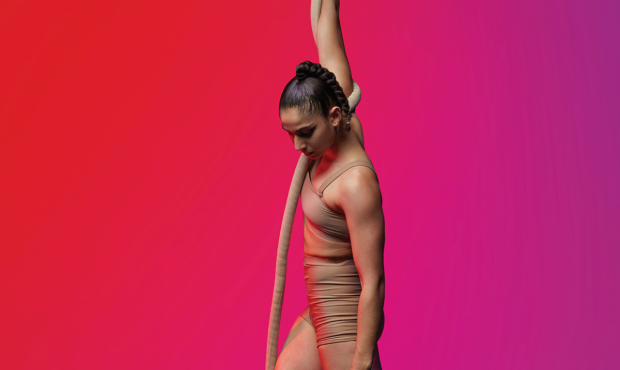250 years of circus: Bending over backwards for a career in contortion
Ela Bartilomo from Circa’s ”Peepshow” explains how she came to a career in contortion as part of our regular feature

© Pedro Greig
This year marks 250 years since the start of modern circus. It was in 1768 that Philip Astley began his circus entertainment in Waterloo in London. To celebrate, here's the latest in our new series of pieces from circus performers explaining a little about the history of their discipline. Ela Bartilomo from Circa's Peepshow explains how she came to a career in contortion.
Born and bred in Brisbane (the home of Circa Contemporary Circus), I took a convoluted path while trying to find my passion. Determined to be a sporty kid, I spent most of my free time from age eight onwards dancing, playing tennis, soccer and attending recreational gymnastics classes. In ninth grade, I found myself simultaneously practising gymnastics, dancing and my new-found hobby ‘youth circus'. Every free hour I had was used for eating or practising. When I first started at Circa I knew I was flexible but didn't realise what I was capable of with a bit of training.
I can still remember when I first learnt what a "chest stand" was. The first time I tried it my feet could
touch the ground beside my head, after a few days I could straighten my legs in the position and get
my bum to touch my head, thus contortion quickly became a big part of my life.
I mostly accumulated material from watching other artists on YouTube
Contortion has origins in Mongolian and Russian roots, but it took me a little while to find my
way under a number of trainers. During my five years in Circa Zoo, I was taught under the wise eyes
of Alyssa Venning and Bree LeCornu, who encouraged me to follow contortion as my main performing discipline. I mostly accumulated material from watching other artists on YouTube, finding pictures of contortionists on the internet and trying to replicate the moves.
Fast forward to 2015 attending the National Training Project in Albury Wodonga – a two-week
intensive course for young people where you train eight hours a day to expand circus
knowledge. This was the first time I had any formal contortion training. I owe a lot to Yos Worth for
educating me about the potentially dangerous disciple I had decided to take on. Here she taught me
how to increase my flexibility safety with the correct techniques and at the same time strengthening my back, core and leg muscles for what I now know is ‘active flexibility' (flexibility you have without the help of gravity).
Some of my smaller joints like my wrists, shoulders and elbows allow me to bend in ways others can't
In 2016, I started my three-year bachelor course of circus at The National Institute of Circus Arts (NICA) in Melbourne. I was strongly encouraged to pursue contortion in some form, though Aerial Lyra and Chinese candle balancing didn't appeal to me much. I decided I would undertake contortion handstand training under the guidance of Jing Jing and alongside my very talented classmate Emily Gare (who is still a continual inspiration for me).
Unfortunately, after about 12 months my back started seizing up and negatively responding to the
intense and repetitive contortion training I was doing. In fact, it started getting less flexible. At this
point I thought I should try to mix things up, that's when I added handstand chairs to my repertoire,
thus my speciality turned into ‘contortion handstand chairs'.
After graduating from NICA, I was known as a flexible artist but I had to be inventive with the ways I expressed my flexibility. Since then, I have discovered that some of my smaller joints like my wrists, shoulders and elbows allow me to bend in ways others can't and, as a result, I have developed some moves that are very unique to my body. I learned the hard way that, while trying to fit into the mould of how other bodies can train and hoping to achieve similar results is very aspirational, it is not always very reasonable. I have since found a new way to express my flexibility without pushing my back beyond its capabilities. Miraculously, my back is now almost as flexible as it was when I first started circus…strange the way these things happen.




















